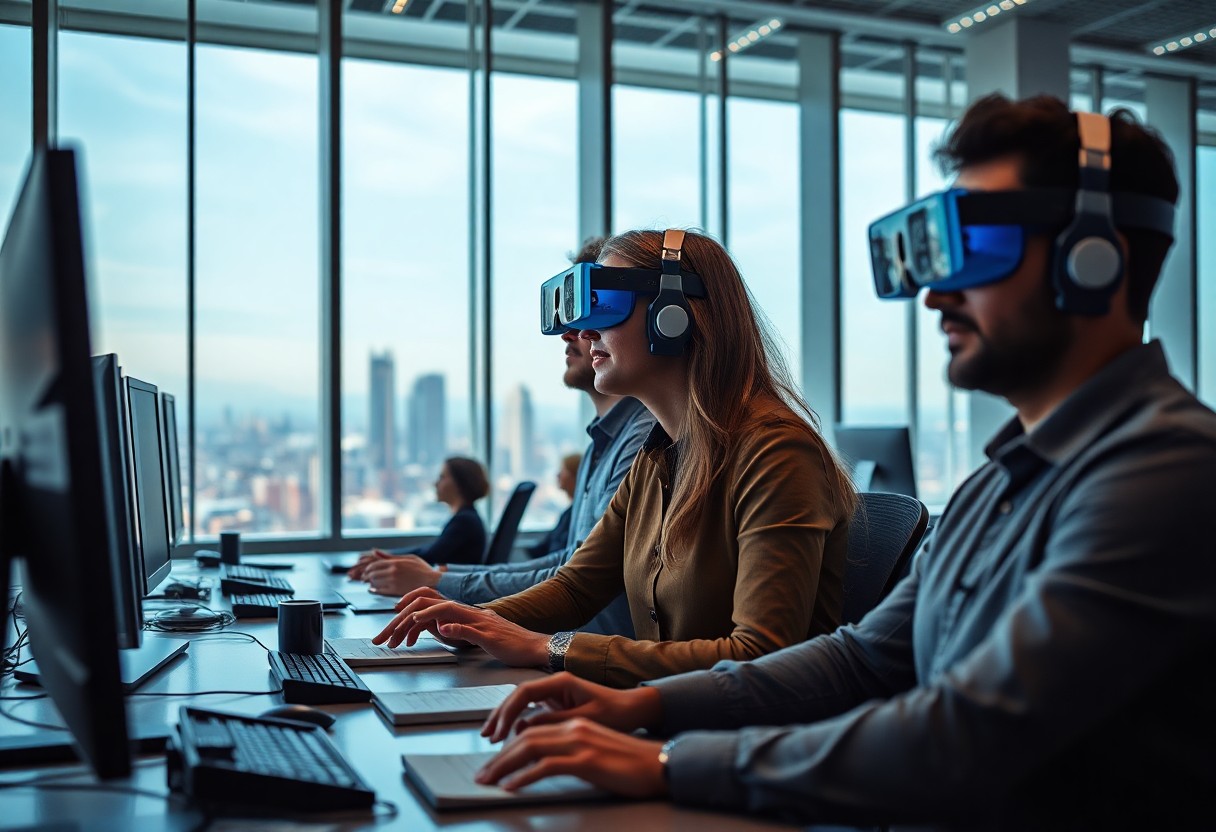Vision is not solely about the clarity of sight; it encompasses a broader understanding of perception and awareness in your life. By exploring how your vision influences thoughts, emotions, and decisions, you can unlock new layers of insight that extend beyond the mere physical act of seeing. This post will guide you on how to enhance your vision in all aspects, enabling a fuller, more enriched experience of the world around you.

Key Takeaways:
- Vision encompasses more than just physical sight; it includes perception and understanding.
- Clarity of vision can be influenced by mental and emotional states.
- Enhancing observational skills can lead to better decision-making.
- Environmental factors and context significantly affect how we see and interpret experiences.
- Practicing mindfulness can improve both visual and cognitive clarity.
Beyond Biological Vision: The Role of the Mind
Your perceptual experience extends far beyond mere eyesight; it is deeply intertwined with cognitive functions that interpret and make sense of visual stimuli. The brain processes the information received from your eyes, allowing you to perceive, recognize, and respond to the world around you. This mental aspect of vision enables you to experience depth, movement, and color, transforming raw data into meaningful images that shape your understanding and interaction with your environment.
Cognitive Processing and Visual Interpretation
Your brain employs complex cognitive processes to interpret what you see, blending sensory input with past experiences, knowledge, and emotions. As you encounter visual information, your cognitive system retrieves memories and associations relevant to that data, enabling you to discern meaning and context. This synthesis turns simple visual cues into rich narratives that influence your behavior and decision-making.
How Context Influences Perception
The context in which you view an image significantly shapes how you interpret it. Surrounding elements, cultural background, and personal experiences play critical roles in influencing your perception. A familiar setting can evoke feelings of comfort, while an unfamiliar one may trigger anxiety or curiosity, altering your view of the visual stimulus.
The Impact of Emotional Clarity on Vision
Emotional clarity significantly influences your perception and interpretation of visual stimuli. When you experience confusion or turmoil internally, your ability to perceive the world accurately often diminishes. Clear emotions enable sharper observations and a more profound understanding of your surroundings, enhancing not just what you see, but how you interact with others and interpret their actions and expressions.
The Connection Between Emotions and Visual Cues
Your emotions can alter how you interpret visual cues. Positive feelings often lead to a more expansive view of your environment, fostering creativity and openness. Conversely, negative emotions may narrow your focus, leading you to misinterpret neutral or benign cues as threatening or unfriendly.
Techniques for Enhancing Emotional Awareness
Enhancing emotional awareness involves practices that cultivate introspection and mindfulness. Techniques such as journaling, meditation, and engaging in therapy can help you identify and process your emotions better, leading to improved clarity in your vision and interactions with the world.
Journaling offers a structured way to express feelings, allowing you to recognize patterns and triggers. Meditation encourages mindfulness, helping you observe your emotions without judgment, while therapy provides a safe space for exploration and understanding. Incorporating these techniques into your routine can heighten your emotional awareness, fostering clearer perception and more insightful interpretations of your visual surroundings. Regular practice leads to a more profound understanding of how emotions shape your worldview, enriching both personal and interpersonal experiences.
The Power of Intuition: Seeing Beyond the Surface
Intuition acts as a compass, guiding you through complex situations by tapping into your subconscious knowledge and feelings. This inner sense enables you to perceive truths and patterns that aren’t immediately visible, allowing for quicker and often more accurate decision-making. By honing this skill, you can enhance your ability to interpret subtle cues that arise in everyday scenarios, opening new dimensions of understanding.
Understanding Gut Feelings and Insight
Your gut feelings often serve as a direct link to subconscious processing. These instincts arise from a wealth of personal experiences and knowledge that your mind has absorbed but may not consciously recognize. Tuning into these insights can reveal emotions, motivations, and potential outcomes that your rational mind might overlook, allowing you to navigate situations with greater confidence.
Developing Intuitive Skills for Better Decision-Making
Strengthening your intuitive skills involves practice, patience, and mindfulness. Engaging in activities such as meditation, journaling, or simply taking time to reflect on past decisions enhances your ability to listen to your intuition. Creating a habit of observing your emotional responses during decision-making can provide valuable feedback on what feels right. Regularly challenging yourself to make small decisions based solely on intuition further builds your confidence in this skill.
Incorporating intuitive practices into your daily life fosters a deeper connection with your inner self. Daily reflection or keeping an intuition journal allows you to catalog and analyze your gut responses, distinguishing between fear and genuine insight. Over time, this practice enhances your ability to read situations accurately, leading to clearer choices in both personal and professional domains. Engaging with mindfulness techniques also sharpens your awareness, ensuring that your intuition can be a reliable guide as you navigate your life’s complexities.

The Influence of Culture on Visual Perception
Cultural backgrounds significantly shape your visual perception, influencing how you interpret colors, symbols, and even shapes. For instance, certain cultures associate particular colors with emotions or meanings that may differ from your own experiences. Research reveals that children’s visual understanding is molded by their cultural context, as highlighted in The eyes of our children.
Cultural Narratives That Shape How We See
Your understanding of visual elements is often framed by the narratives prevalent in your culture. For example, storytelling traditions influence what you find significant or appealing. In some cultures, motifs may represent family lineage, while in others, they might portray nature’s beauty. This shared history impacts not just individual perceptions but also collective aesthetics, leading to diverse interpretations of similar visual stimuli.
The Role of Environment in Visual Understanding
Your surroundings, including architecture and natural landscapes, fundamentally affect how you perceive visuals. Urban settings often inundate you with structured lines and vibrant colors, while rural areas present a softer palette of greens and browns. Moreover, the availability of resources can dictate the materials and colors used in local art, further shaping your visual preferences and sensitivities.
Multiple studies indicate that environments rich in visual stimuli can enhance your cognitive abilities and affect your emotional responses. For instance, children raised in colorful neighborhoods often demonstrate better creativity and abstract thinking compared to those in more monochrome spaces. This interplay between environment and visual understanding underscores the idea that your everyday landscape plays a critical role in shaping how you see and interpret the world around you, merging cultural narratives with personal experiences.

Practical Steps to Enhance Multi-Dimensional Vision
Improving your multi-dimensional vision involves practical exercises and mindfulness techniques that sharpen your perception and thinking. Engaging in regular practices can help you navigate complexities more easily, enabling a richer understanding of your environment. By incorporating targeted activities into your routine, you not only expand your visual acuity but also foster cognitive flexibility, leading to enhanced decision-making and creativity.
Exercises for Clearer Thinking and Perception
Incorporate mental exercises that challenge your pattern recognition abilities and spatial awareness. Activities like puzzles, memory games, and artistic endeavors strengthen your cognitive faculties. Regularly engaging with diverse visual stimuli can enhance your analytical skills, helping you see beyond the surface and grasp underlying patterns that inform your decisions.
Mindfulness Techniques for Heightened Awareness
Practicing mindfulness enhances your ability to observe and interpret your surroundings more effectively. Techniques such as focused breathing and body scanning can help you center yourself, heightening awareness of your thoughts and feelings. This improved clarity translates into your visual experiences, broadening your understanding of both the external world and your internal landscape.
Mindfulness techniques can be particularly effective in cultivating a deeper sense of awareness in daily activities. Whether you’re walking in nature or enjoying a meal, focusing on sensory experiences can enhance your ability to notice subtleties around you. This practice not only fosters appreciation for the present moment but also trains your mind to detect nuances in visual information, ultimately leading to sharper perception and a well-rounded understanding of your environment. Consider dedicating a few minutes each day to mindfulness exercises, allowing this heightened awareness to transform your overall vision and perception.
To wrap up
Hence, understanding that seeing clearly extends beyond your physical vision is crucial for navigating life effectively. By cultivating awareness and insight, you can enhance your perception of both the world around you and your inner self. This holistic vision not only enriches your experiences but also empowers you to make informed decisions and foster meaningful connections. Embrace this multi-dimensional perspective, as it will significantly influence your interactions and overall well-being.
FAQ
Q: What is the central theme of ‘All Is Vision – How Seeing Clearly Extends Beyond The Eyes’?
A: The central theme explores the concept that perception and understanding extend beyond physical sight, emphasizing emotional, mental, and spiritual clarity in interpreting one’s surroundings.
Q: How does the book link vision to personal development?
A: The book illustrates that enhancing one’s vision involves internal growth, advocating for mindfulness, emotional intelligence, and self-awareness as necessary components of seeing clearly in life.
Q: Can the insights from this book be applied in daily life?
A: Yes, the insights promote practical exercises for improving clarity in decision-making, relationships, and overall well-being, encouraging readers to engage in reflective practices.
Q: Is there a scientific basis for the claims made in the book?
A: The book references psychological studies and anecdotal evidence to support its claims, highlighting how our mental and emotional states influence our perception of reality.
Q: Who would benefit most from reading this book?
A: Individuals seeking personal growth, enhanced emotional intelligence, or better interpersonal relationships would find valuable insights in this book, making it suitable for a wide audience.

Leave a Reply